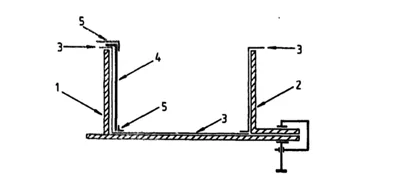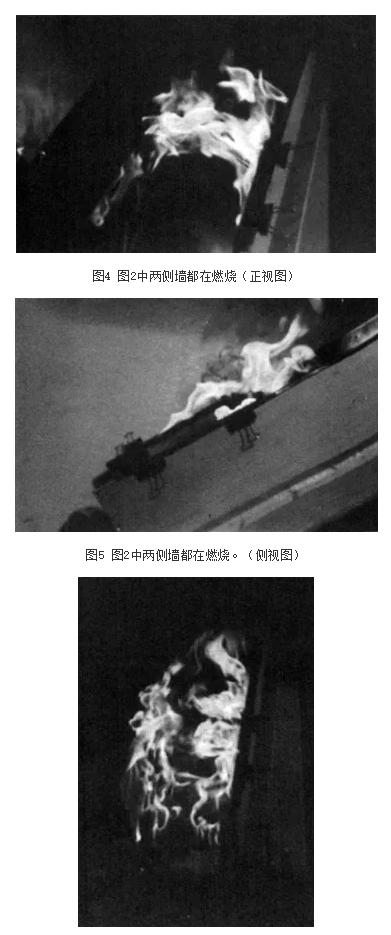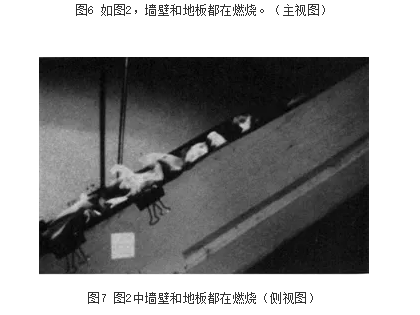国王十字站火灾:“沟槽效应”的实验验证
国王十字站火灾:“沟槽效应”的实验验证
1987年11月18日,英国伦敦国王十字地铁站火灾,造成了31人死亡。开展此次调查过程中,调查人员发现有两个问题需要科学解释:1. 地铁站人流往来频繁,地铁站内人员18:30就闻到异味,但始终没有人发现扶梯通道内起火,导致火灾没有得到及时控制;2.为什么火灾会如此迅速的蔓延至售票大厅,导致造成大量人员伤亡。针对上述两个调查中遇到的问题,英国爱丁堡大学的D.D.Drysdale教授带领团队开展了关于扶梯通道“沟槽效应”的研究,1992年部分研究内容发表在《Fire Safety Journal》期刊。通过翻译此篇关于“沟槽效应”文献,希望对大家认识这种特殊燃烧现象有所帮助,更好地开展调查工作。译者水平所限,有不妥之处,恳请批评指正! This paper describes the series of experiments carried out to elucidate the mechanism by which the fire involving an escalator at King's Cross Underground Station on 18 November 1987 spread so rapidly. 本文通过一系列实验,用以阐明1987年11月18日国王十字地铁站自动扶梯火灾迅速蔓延的机理。 During the early stages of the investigation which followed the King's Cross Underground Station fire of 18 November 1987, the mechanism by which the fire had developed with such apparent rapidity was not known. The first clue was given by the results of the computational fluid dynamics (CFD) model developed at Harwell,I which indicated that a heat source between the balustrades of the escalator would produce an upward flow of hot air, confined within the escalator channel which lay at an angle of 30 to the horizontal. Although this was not realistic as a fire model, it prompted this investigation into the dynamics of flames associated with an inclined channel. 在1987年11月18日国王十字地铁站火灾早期调查阶段,火灾快速发展的机理尚不清楚。第一条线索是通过Harwell建立的计算流体动力学(CFD)模型得到的,该模型表明,自动扶梯栏杆之间的热源会产生向上的热气流,被限制在与水平面成30°的扶梯通道内。虽然这实际并不是一个火灾模型,但它推动我们对倾斜通道相关的火焰燃烧动力学研究。 At the time, there was only limited knowledge of the behaviour of fames spreading over inclined surfaces, although fiame defilection towards a plane slope had been reported for angles as low as 20° to the horizontal.Preliminary experiments with a channel lined with cardboard and inclined at 30 (to represent a b-scale model 'escalator' lined with wood) revealed significant fiame interactions, which resulted in onfinement of the flames to the ckannel and rapid upward spread.Accordingly, a series of experiments was undertaken to investigate these interactions further. 当时,人们对火焰在倾斜表面上蔓延行为的了解非常有限,尽管有报道称火焰向水平面倾斜的角度低至20°。初步实验是在倾斜角为30°,用硬纸板做的通道中进行(表示1:10大小的木制扶梯模型),研究火焰被限制在通道内并迅速向上蔓延的相互影响。因此,通过一系列实验来进一步研究火焰的相互影响。 The apparatus 实验装置 The channel was constructed from 9.5 mm plywood, faced on the inside with aluminium sheet, 1-3 mm thick (Fig.1). The sides were 200 mm high and their separation could be varied up to a maximum of 320 mm.In the experiments described here, the separation was 280 mm, giving a cross-section in approximate proportion to the escalator invoived in the fire. The total length was 2460 mm (8ft). It was located beneath an extract hood, but there was no imposed airflow. 通道由9.5mm厚的胶合板制成,并在内层贴1.3mm厚的铝片(图1)。其两侧高200mm,最大间距为320mm。实验间距为280mm,其横截面与火灾中的自动扶梯近似成比例。全长2460mm(8ft)。用罩子将其罩起来,以防止外部气流的影响。

图1 实验通道的横截面,显示紧贴左侧“栏杆”的可燃物。(1)固定栏杆,由9.5mm厚的胶合板构成;(2)可移动栏杆(也由胶合板构成);(3)1.3mm厚的铝片;(4)石蜡浸过的硬纸板;(5)实验期间用于固定硬纸板的角钢。
The fuel
可燃物
As the obiective of these experiments was to examine the behaviour of the flames rather than to model the fire initiation and growth, the fuel was chosen to give established burning in as short a period of time as possible, with sustained burning for at least 1 min. Cardboard (2 mm thick,98 kg/m') soaked in paraffin (c.3g/m) was found to be suitable: the cardboard acted as a stable wick, allowing the liquid to burn off fairly uniformly. Paraffin is perhaps too volatile for this purpose, but other less volatile fuels which were tried caused the cardboard to char and buckle during flaming, which could give irregular behaviour. With paraffin, the card remained in place until the liquid fuel had been largely consumed, thus allowing the behaviour of the flames to be observed.
由于此实验的目的是研究火焰行为,而不是模拟火焰发生发展的,因此选择的可燃物要在短时间内进行稳定燃烧,至少持续燃烧1分钟。浸有石蜡(c.3g/m2)的硬纸板(2mm厚,98kg/m2)是较为合适的可燃物。硬纸板作为稳定的灯芯,可使液体均匀稳定的燃烧。根据此实验目的,石蜡可能挥发性过强,但是如果使用其他挥发性较差可燃物,会导致燃烧过程中硬纸板炭化和变形,继而产生不规律的行为。直到液体可燃物几乎被完全燃尽前,浸有石蜡的纸片将一直保持原位,以便观察火焰行为。
Sections of paraffin-soaked card, 20 cm in length, were held against the sides and fioor of the channel by lengths of thin-section, mild-steel angle. Ignition was achieved by using a gas torch to set alight pieces of paraffin-soaked string lying along the foot of the "balustrades'. Card on the floor' was ienited by direct fiame contact along its lower edge.Complete involvement of the fuel-bed surfaces was normally achieved within 20-30s, and quasi-steady burning lasted for another 60-75 s.
将长20cm浸有石蜡的纸片,铺设在通道的侧面和底面上,并用角钢和薄片固定。使用气体点火器点燃放置在“扶梯”底部浸有石蜡的细绳,实现引燃。“地板”上的纸片被来自下方的火焰直接点燃。通常在20~30s内,可燃物表面将完全处于燃烧状态,准稳态燃烧可再持续60-75s。
Several series of experiments were carried out, but the most important involved a section of channel which was in the same proportion as the King's Cross escalator. The behaviour of the fames that were observed characterise the so-called 'trench effect' very well. The 20-cm lengths of paraffin-soaked card were located with their lower edges 50 mm from the foot of the channel. Figures 2-7 compare three situations in which only one side ('balustrade') is burning (Figs 2 and 3), (i) in which both sides are burning (Figs 4 and 5), and (ii) in which both sides and the "floor' are burning (Figs 6 and 7). It was noted that when only a section of "floor' was burning, the flames remained in the channel, flowing upwards at an angle of 30, hugging the floor above the burning section: the implications for fiame spread are discussed elsewhere.
虽然进行了多组实验,但最重要是在与国王十字站扶梯比例相同通道内进行的实验。所观察到的火焰行为,很好地表征了所谓的“沟槽效应”。浸有石蜡的长20cm纸片从距离底边50mm的位置开始铺设。图2-7对比了三种情况:(1)只有一侧(“栏杆”)燃烧(图2和3);(2)两侧都燃烧(图4和5);(3)两侧和“地板”都燃烧(图6和7)。可以看到,当只有“地板”一面燃烧时,火焰被限制在通道内,紧贴着燃烧区域的上部地板,沿30°倾斜面向上蔓延燃烧。此种火焰蔓延情况将在他处论述。
When only one side is burning, the fames are observed to rise vertically (Figs 2 and 3). When both sides are alight, the flames are deflected towards the centre-line of the channel, their tips merging (as shown in Fig. 4), and also towards the slope of the channel, effectively reducing the height of the flames as seen from the side (Fig. 5). When both sides and the floor are alight, the flames interact and are deflected o such an extent that the confinement to the channel is almost complete (Figs 6 and 7).
当只有一侧燃烧时,观察到的火焰是垂直向上(如图2和图3)。当两侧都在燃烧时,火焰将偏向通道的中心线,其火焰前锋发生合并(如图4),也会偏向通道斜坡,从侧面看显著降低了火焰高度(如图5)。当两侧和地板都燃烧时,火焰相互作用,并会倾斜到完成限制在通道燃烧的程度(如图6和图7)。
The same type of behaviour was observed when the burning surfaces were located near the top (within 200 mm) of the channel, and when the length of the burning fuel bed was reduced from 20 to 5 cm. The effect of channel width was also investigated, albeit superficially. It was more pronounced for 'a 200-mm-wide channel, but there was still some fame deflection when one side was completely removed (infinite width), provided the floor was alight.
当燃烧表面位于通道顶部200mm附近,且当可燃物长度由20cm减至5cm是,观察到了相同火焰行为。同时,研究了通道宽度对火焰特征的影响,但研究不够深入。通道宽为200mm时,现象更为明显,但只要地板被引燃后,即使是一侧墙被完全拆除后,有些火焰仍会出现偏向通道的情况。



The scale experiments described in this paper clearly reveal a type of flame behaviour which had not previously been identified. If the internal surfaces of an inclined channel are burning, the flames are deflected into the channel if the angle of inclination is 30 ° . The effect is greatest if the floor is burning, but there is evidence that it will occur to a significant extent if only the sides are involved. The effect is enhanced in narrow channels, although the limits have not been ascertained. No attempt was made to model either the confining shaft or the combustible side wall that were present in the King's Cross fire. The fact that the channel itself was capable of confining the flames and keeping them below the 'handrail' level is consistent in a qualitative sense with the dynamics of natural diffusion flames, which satisfy their demand for oxygen by entraining air from the surrounding atmosphere.
本文所述的1:3比例实验清晰地揭示了一种以前未发现的火焰行为。如果通道倾斜30°,通道内侧发生燃烧,火焰将向通道倾斜。虽然地板燃烧时,现象最为明显,但也有证据表明,只要一侧壁面燃烧,此现象也会出现。虽然边界条件尚未明确,但狭窄通道将强化此种现象。实验没有模拟国王十字站火灾中的竖井和易燃侧面。通道自身能够限制火焰并将其保持在“扶手”水平高度以下,这一事实在本质上与自然扩散火焰动力学是一致的,后者通过从周围大气中吸入空气来满足其对氧气的需求。
Moreover, such behaviour can account for two critical features of the original fire-why it was not perceived much earlier that a life threatening situation was developing, and why the fire spread so rapidly into the booking hall. The former is consistent with flame deflection into the escalator channel (cf. Fig. 7): none of the survivors reported seeing "large flames' before the fire erupted into the ticket hall-not even Fireman Bell, who descended an adjacent escalator (No. 6) only 2 or 3 min previously.5 The rapid spread of fiame up the escalator is consistent with high rates of heat transfer generated by fiames and hot gases deflected upwards between the wooden balustrades. This hypothesis was subsequently confirmed in the t-scale tests carried out at the Health and Safety Executive Laboratories at Buxton (Derbyshire, UK).
此外,这种火焰行为可以解释火灾初期的两个关键问题,即:为什么人们没有在初期火灾发展到危及人的生命之前,更早地发现火灾?为什么火灾会如此迅速地蔓延至售票大厅?第一个问题与实验中火焰向自动扶梯通道内倾斜的研究结果一致(如图7):在火烧到售票大厅前,没有一名幸存者表示看到过“大火焰”,甚至消防员Bell也没有发现,他在火灾前2~3分钟乘相邻的(6号)自动扶梯下来。实验中在木质壁面之间,向上的火焰和热烟气造成的快速热量传递与实际火灾中火焰在自动扶梯上的迅速蔓延是一致的。随后在Buxton(英国德比郡)的健康与安全实验室(Health and Safety Executive Laboratories)进行的1:3比例的实验证实了这种假设。
It is likely that this behaviour will not be unique to escalators and may be observed in other inclined combustible surfaces with an appropriate degree of confinement.' A better understanding of the controlling factors is required so that other configurations which are capable of rapid fire growth can be identified. Such work is currently in hand at Edinburgh University.
此种火焰行为并非只自动扶梯处发生,当限制条件合适时,在其它切斜可燃平面也可能发生。这就需要更深入的了解控制因素,以便可以识别出其它可能造成火势快速结构。目前爱丁堡大学正在进行此项研究。
1. Simcox, S, Wilkes, N. S. & Jones, I. P, Fire at King's Cross Underground Station, 18th November 1987: Numerical simulation of the buoyant flow and heat transfer. Report No. AERE-G 4677, Harwell Laboratory, Harwell, UK, 1988.
2. Markstein, G. H. & De Ris, J., Upward fire spread over textiles, l~h Symposium (International) on Combustion. The Combustion Institute, Pittsburgh, PA, USA, pp. 1085-97.
3. Drysdale, D. D, Introduction to Fire Dynamics. John Wiley & Sons, Chichester, UK, 1985.
4. Drysdale, D. D. & Macmillan, A. J. R. Flame spread on inclined surfaces. Fire Safety J. (in press).
5. Fennell, D, Investigation into the King's Cross Underground Fire. HMSO, London, UK, 1988, Ch. 12.
6. Moodie, K. & Jagger, S. F., The King's Cross Fire: Results and analysis from the scale model tests. Fire Safety J, 18(1) (1992) 83-103.
